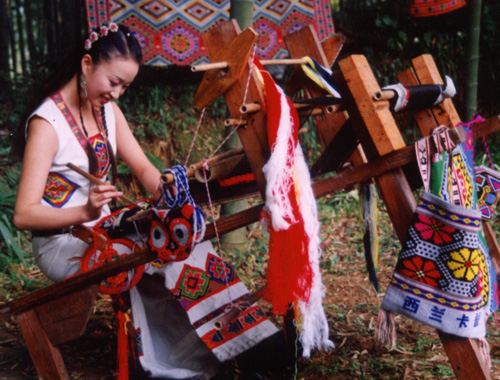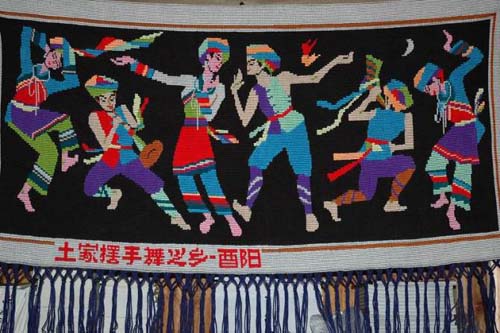| About Hubei | Culture & Arts | ||
| Attractions | Routes | ||
| Dining | Shopping | ||
| Hotels | Transportation | ||
| Entertainment | Travel agencies |
Jingshan to attract Wuhan tourists
Storytelling queen
For the love of Wuhan
Dangyang to promote tourism


Folk customs of Tujia ethnic group
Updated: 2011-12-23
The Tujia ethnic group of Enshi, Hubei province has rich and colorful folk literature and art. The group is best known for their epics and folk songs.
They are also famous for the wind instrument, Duo Duo Rang, which is popular in Longshan, Yongshun and Baojing counties. Ge Ge Long is a 13cm-long bamboo instrument, with sounding reeds and three or four holes in the pipe shaft that form two musical scales. Dong Dong Kui, a single reed wind instrument, is played to different tunes with fixed titles. These instruments may be played solo, in unison or in as an ensemble. Da Liu Zi is popular in the western parts of Hunan and Hubei provinces, played with head cymbals, second cymbals, Tu gongs and Ma gongs. This three to four piece ensemble produces a distinct rhythm and can perform over 100 melodious tunes.
 |
| Folk customs of Tujia ethnic group |
Mao Gu Si, a small drama played in open air festivals, features dialogue embellished with a chorus and antiphons. The performers, wrapped with rice straws, interact with audiences, who may make gags in the course of performances. The leading performer is known as the old Maogusi and the other is called young Maogusi. Mao Gu Si depicts life in the mid and late primitive society, such as hunting and fishing.
Tujia ethnic women are skilled at weaving Xi Lan Ka Pu, also known as Tujia brocade or Xizhou spotted cloth. Xi Lan Ka Pu, with a 2,000-year history, is used to process garments or bedcovers. At the age of ten, girls will learn to weave a Xi Lan Ka Pu as a veil for when they get married and as a cloak for singing and dancing parties. Xi Lan Ka Pu is also traditionally used to wrap clothes for husbands embarking on a long journey, a gesture that shows that the loving wife is accompanying him.
 |
| Folk customs of Tujia ethnic group |
Tujia ethnic group has unique diets. Oil-tea soup is one of the group’s most popular dish. It is processed by frying yellow tea leaves in edible oil, adding a handful of water, and boiling it into brown tea starch. It is ready to consume once diluted with water, boiled and added with salt, garlic, pepper and other seasonings. These days, parched rice, fried beans, vermicelli made from bean starch, and egg slices are added to enhance the taste. The Tujia ethnic group are also fond of sticky rice cakes and balls, and preserved meat. They also favor hot pepper, Sichuan pepper, and lindera glauca.
Tujia people are also known to be hospitable. Tujia hosts entertain guests first by offering a bowl of sticky rice sweet wine in summer or a bowl of fried dough twist in winter, followed by a drink and then a meal.